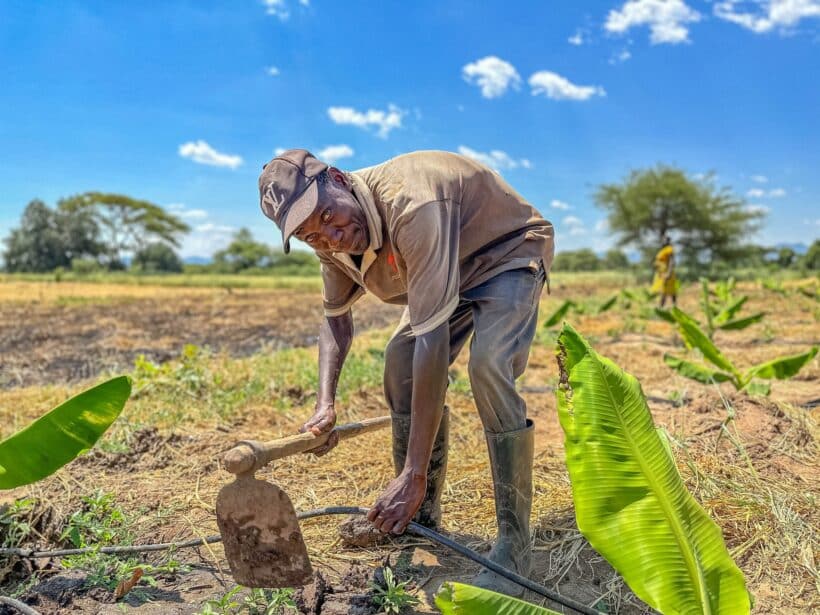
In 2024, Zambia faced one of its most severe droughts in recent history, that placed a deep strain on water and electricity supplies, deepened food insecurity, and exacerbated a deadly cholera outbreak. While the arrival of rain this year has somewhat eased water shortages, electricity supply remains limited, and other challenges persist. A year on from the crisis, President Hakainde Hichilema has effectively led his government towards a new approach; one that transforms these pressing issues into opportunities for sustainable solutions.
Drought Impact and Response
The drought, considered the worst to hit Zambia in two decades, resulted in a widespread food shortage, and an estimated 33% of the Zambian population were expected to face hunger between October 2024 and March 2025, before an expected strong maize harvest in the second quarter this year. In response, at the time, President Hakainde Hichilema declared the drought a national disaster in February last year, enabling the immediate mobilisation of national and international resources – marking a shift from the delays seen under previous administrations.
The government showed similar decisive action when water scarcity in 2024 exacerbated a brief cholera outbreak which had begun in October 2023. A multi-sectoral ministerial response team was swiftly mobilised to tackle the disease from various fronts. Internal resources were allocated to community awareness campaigns,
Public sanitation efforts, and personal hygiene promotion
Partner organisations, including the Africa CDC, answered the government’s call for support, contributing by training health workers, supplying medical equipment, and enhancing cross-border disease surveillance.
Beyond these measures, the government has taken significant steps to strengthen Zambia’s long-term healthcare resilience. In October 2024, President Hichilema oversaw the signing of a $37 million Memorandum of Understanding (MoU) between the Industrial Development Corporation and China’s Jijia International Company to construct the country’s first cholera vaccine plant.
This domestic production capability addresses a critical gap exposed during the 2023/24 outbreak when vaccine shortages hampered response efforts. Furthermore, it puts Zambia on course to eliminate the disease by 2030, aligning with global health targets.
The government’s containment efforts in 2024 have yielded promising results. So far, Zambia has recorded 208 cases and 9 deaths – an enormous improvement compared to nearly 20,000 cases and over 600 deaths at the same time last year. This sharp decline highlights the effectiveness of the government’s proactive health measures.
While managing the health crisis, the government also had to address the drought’s severe impact on energy supply. Water levels in the country’s two major hydropower water basins have been drastically depleted, leading to frequent blackouts with disruption to industries and communities alike.
In response, the government introduced regulations to fast-track the importation and deployment of renewable energy solutions, particularly solar power. It also implemented net metering and enhanced electricity open access, encouraging increased private sector participation in the power sector. These measures align with the broader strategy to diversify Zambia’s energy mix and reduce dependence on centralised hydroelectric power.
Comprehensive steps have also been taken to address food security, moving beyond emergency responses toward sustainable solutions, with a focus on urban agriculture. A key milestone in this effort was the development of Zambia’s first National Rainwater Harvesting Strategy to improve water security, supported by the European Union’s Green Nexus Programme. In 2024, the government strengthened this approach by launching the Comprehensive Agricultural Transformation Support Program (CATSP), designed to enhance food security, create jobs, and boost agricultural exports. This commitment is further reflected in the 2025 national budget, which allocates K15.4 billion to agriculture, fisheries, and livestock interventions – up from K11.2 billion in
2023 and K13.8 billion in 2024. Of this, 60.1% (K9.27 billion) is earmarked for the Farmer Input Support Programme (FISP), ensuring small-scale farmers have better access to agricultural resources. Support for small-scale farming has been further strengthened through the National Agricultural Mechanisation Strategy, developed in collaboration with universities, farmers, the private sector, and international partners such as the EU, the UN’s Food and Agriculture Organization (FAO), and the International Maize and Wheat Improvement Centre. This strategy aims to increase agricultural productivity across crops, livestock, and fisheries, with a strong focus on maize, wheat, and soya production. Under the same strategy, the government launched the ‘Mechanise 360 Ulimi Okwana’ campaign aimed at modernising agricultural practices for smallholder farmers across 500,000 hectares of arable land.
To tackle the broader issue of food security and challenges to public health, the government is also investing in water, sanitation, and infrastructure. The 2025 budget allocates K2.3 billion to water and sanitation projects – 21% higher than the previous year’s allocation. Under the Food Security and Drought Response Plan, 12 new dams will be constructed, 14 rehabilitated, and 385 will undergo maintenance, with plans to construct 947 boreholes, install 500 piped water schemes, and develop 1,835 water points. These projects aim to improve water management, enhance public health, and reduce the prevalence of waterborne diseases while ensuring reliable water access for over 3.5 million Zambians.
Transforming Crisis into Development Opportunities
By declaring the drought a national disaster and emergency, the government was able to swiftly mobilise resources and coordinate assistance with international partners. Citizens have adapted by finding new ways meet their food and energy needs, shifting away from rain-fed maize farming and increasing their uptake of solar power and alternative energy sources for cooking and heating. Increased government funding and active engagement have strengthened public trust in its capacity to address Zambia’s most pressing challenges.
While the drought tested Zambia’s resilience last year, it catalysed sustainable solutions, demonstrating the country’s capacity to adapt to the evolving demands of climate change and food security.

